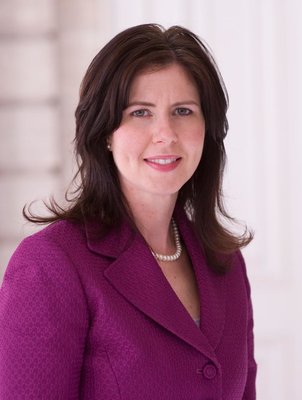The administration of new Schools Chancellor Meisha Ross Porter provides us with a moment to reconsider policies that have worked and ones that haven’t over the course of the de Blasio administration.
The failing efforts to better integrate our schools could benefit from some fresh thinking.
Chancellor Porter has emphasized the urgency of integrating the public schools. It’s an important goal in a system that is more segregated now than it was 50 years ago, but it is also the unrealized goal of her predecessor.
If Porter follows the playbook from the de Blasio tenure, which includes fighting to change the admissions standards at our specialized high schools, eliminating gifted and talented programs, and setting demographic quotas for certain schools, her efforts are likely to face the same fate as those of her predecessor, whose tenure ended in frustration.
The recently announced admissions results at the specialized high schools should act as a call to action that the city needs new policies.
The sensible alternative to integrate our schools, based on years of real-life experience and what research has shown to be more effective is to increase the number of seats at successful schools, create engaging, magnet programs that draw in a range of families, expand the number of gifted and talented programs in underrepresented areas, and replicate effective schools throughout the system.
As a parent of two public school graduates, I know that all parents want their kids to get the best education in a school that helps them achieve their maximum potential, ideally in their neighborhood.
It’s a goal that every parent is willing to fight to achieve. And it should be the goal of the new chancellor.
For all of the political fighting over them, gifted and talented programs have been shown to challenge our brightest students and to put them on a path to success. Unfortunately, there are not enough seats for the number of students qualifying to attend, and in certain neighborhoods there are no programs at all.
Since these programs are not offered at every school, nor equally spread throughout the DOE’s districts, many families will have their children take hour-long bus rides to school, as they want them to attend these successful programs no matter where they are located.
In my former City Council district in Middle Village, the DOE recently created PS 254: The Rosa Parks School. It is a magnet school with a diverse learning community that has achieved incredible results due to a highly innovative program that draws in families.
And it’s located in an area that is not known for great schools.
PS 290, another relatively new school, has a new gifted and talented program that is largely populated with students of color from low-income backgrounds. It shows how the DOE can find gifted students in any neighborhood when it creates a program that interests parents in their community.
In another example, the arts-focused LaGuardia High School did not have enough seats for talented students, so the DOE created the Frank Sinatra School of the Arts. Both schools are now highly successful at developing our city’s budding artists, and more students are able to attend.
And the schools are in different boroughs to boot.
Brooklyn Latin and the Queens High School for Sciences are also recent examples of the DOE creating more high-quality schools based on successful models and located in new neighborhoods that can serve more children. And all of these schools could easily serve more children by expanding them.
But a de Blasio-appointed school advisory committee recently announced that they want to eliminate gifted and talented programs. It’s the exact opposite of what they should be doing.
The DOE should expand and replicate these programs in every neighborhood in the city, so there are enough seats for every child who qualifies.
The time that our city and school leaders spend dividing up the small number of seats at successful schools, and trying to do so by race, is unproductive, divisive and potentially illegal.
The Rosa Parks School, PS 290 and the Frank Sinatra School of the Arts are all examples of different methods that the DOE can employ to integrate our schools.
The DOE must create more high-quality magnet programs in neighborhoods with low-performing schools, create new gifted programs in underrepresented areas, and replicate high performing schools in communities throughout the city.
It’s a simple solution to a complex problem that has been shown to work for our city’s kids.
Elizabeth Crowley is a former member of the City Council and candidate for Queens borough president.



